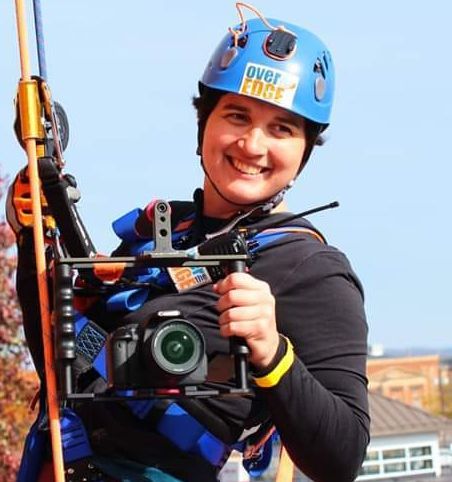It was April 2, 2003, and a van filled with seven businessmen from Beijing, China, was traveling south on Route 15. The van careened off the side of the mountain near the overlook above South Williamsport.
When Lycoming County Coroner Charles Kiessling Jr. arrived he was told to expect seven bodies. He walked to the edge of the road and looked down the mountainside – a scene of carnage spread out in front of him. At that time, the county didn’t have a vehicle big enough to transfer that many bodies. He called in as many deputies as he had at the time and was forced to use his personal vehicle to transfer most of the bodies.
Looking back on over 20 years as coroner, this still is the first scene Kiessling remembers.
A bad reputation
Kiessling stepped into a tough job in 1997 when he became the interim coroner. His predecessor had just been arrested for stealing personal items off bodies of the deceased. It was a serious blow to the office and for years after he took office Kiessling recalled family members removing valuables from their loved ones before he arrived on the scene.
It was a difficult time for the reputation of the county coroner’s office, something that Kiessling has worked hard to change ever since.
New methods of tracking personal effects were implemented, and Kiessling now ensures his staff keep all personal items from the deceased in a secure location before they are handed over to the family.
Kiessling has enjoyed over 20 years with no opposition at any of his re-election bids.
Deaths on the rise
For his first eight years on the job, Kiessling was the only full-time employee in his office.
“It was just me, myself and I,” he said. “And me, myself and I were getting tired.”
Deaths were on the rise, and teen driving deaths were coming in at a terrifying rate.
From 2000 to 2005, 29 teens were killed and from 2006 to 2015, the trend continued with another 16 losing their lives. As assessment showed that most crashes were due to alcohol, drugs, speeding or texting while driving. It was a tragic trend that weighed heavily on Kiessling and almost caused him to leave his position.
“After about five or six years, I thought, ‘I don’t know if I can do this,’” he said. “My heart goes out to those families.”
In 2001, Kiessling founded the Child Death Review Team to evaluate how children were dying in the county and what could be done to stop it. The answer lay in education, and that’s what he started to do. The coroner’s office began working with area schools, parents and youth to educate about the dangers of texting and driving or driving while intoxicated. Maps that showed details about the teens who died as well as many photos were also created in an effort to put a face to the issue.
“We saw a significant drop in the number of teen deaths in the county,” he said, a major success for his office.
Co-sleeping deaths
In 2008, a new trend began to emerge. Infants were dying from sleeping with an adult or another child. They are called co-sleeping deaths.
“It takes nothing to asphyxiate a child,” Kiessling said. “You bring this bundle of joy home and two, three, six months later, you’re burying it.”
But just as he had noticed with the teen deaths, Kiessling decided that prevention through education was the best way to deal with infant deaths. He started the Cribs for Kids program, providing young parents with cribs, mattresses and proper education on how to lay their child down to sleep.
The deaths began to trickle off and the coroner’s staff were happy to see three years without any infant deaths. But that changed this past year, with four infant deaths – one due to co-sleeping and the other three still under investigation.
“We really get our hopes up that we are significantly reducing some of these situations, but then reality hits that it’s still going to happen sometimes,” Kiessling said.
‘Runaway freight train’
For the past five years, drug deaths have skyrocketed within the county’s death rates. Last year saw a record number of overdose deaths with 39, but now sitting at 23 drug deaths, this year is on track to surpass 2019’s numbers, Kiessling said.
“It’s a runaway freight train,” he said.
Regardless of education, overdose deaths continue to rise, with no foreseeable way to stop them. When one deadly drug, such as heroin, runs its course, another takes its place, Kiessling said.
That new drug is either fentanyl or a mixture of cocaine, fentanyl prescription drugs and methamphetamines. Between six and 10 drugs can be found in one individual at the time of death, meaning Kiessling often is unable to determine which drug killed the person.
‘20 years of horror’
It’s hard for Kiessling to recall many of the scenes he’s been called out to. He tries not to remember them.
“I’m here to do the job, get the answers for the families … and then I forget about it,” Kiessling said. “If I started to go back and think about 20 years of horror that I’ve seen, you just couldn’t do it.”
But Kiessling is no longer alone. His office has now grown to include a secretary and a full-time deputy coroner. The staff has grown to fit the need, Kiessling said; however, he continues to push the county commissioners for a new facility to accommodate the rising deaths.
At the end of the day, Kiessling says his job is simply to advocate for those who have passed on and use their passing to try and prevent more deaths.





Great article about our county coroner – an amazingly difficult job.